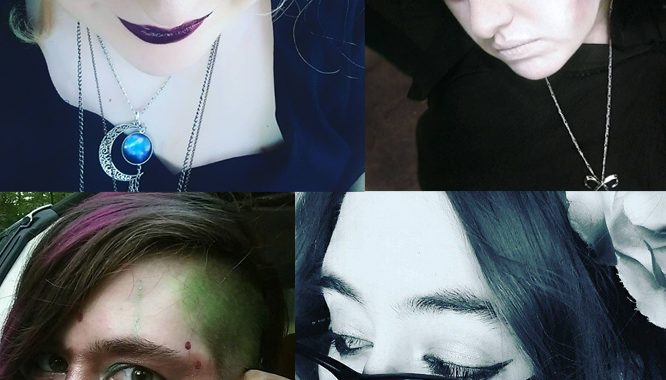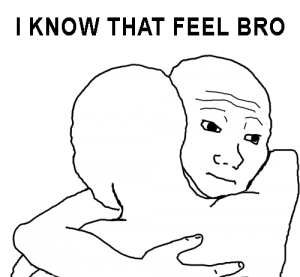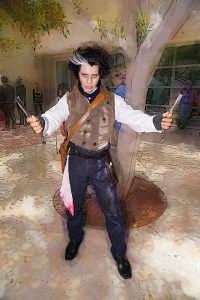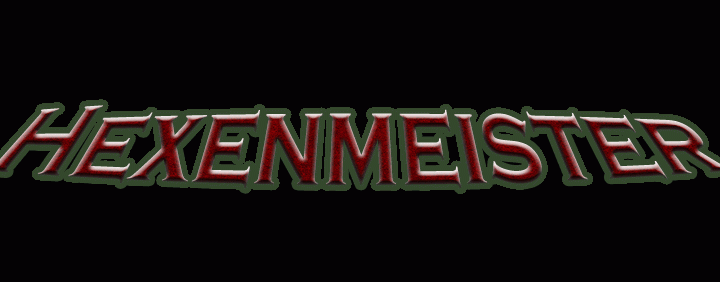Now out for public consumption!
When most people describe the World of Darkness the first thing that tends to come up is gritty street wars fought between the undead and other horrors of the night. Sometimes that includes hyper violent Garou burning with deep bloody passions trying desperately to stop creeping death from consuming mother Earth, or Nephandi seeking to corrupt all they touch. However, for some, the World of Darkness is very different.
Underlying the horrors of the first 4 WoD titles is the hidden chimerical world of Changeling: The Dreaming. When I started gaming in my mid-teens, I lived in a town where Changeling was so popular, our local LARP crew built home brew Mind’s Eye Theatre rules because they couldn’t wait for Shining Host to dive into the capricious machinations of the fae.
 When I left my early gaming bubbles I was surprised to discover that Changeling is not the universally loved game I was familiar with. I have heard from more than a few people that Changeling is a fine game, but it doesn’t belong in the World of Darkness. So when the Changeling: The Dreaming 20th Anniversary Kickstarter succeeded with flying colors I was excited, not only that Changeling might have another life, but that with a 20th Anniversary edition the full scope of tragedy and horror Changeling represents might be brought into focus for a wider swath of players.
When I left my early gaming bubbles I was surprised to discover that Changeling is not the universally loved game I was familiar with. I have heard from more than a few people that Changeling is a fine game, but it doesn’t belong in the World of Darkness. So when the Changeling: The Dreaming 20th Anniversary Kickstarter succeeded with flying colors I was excited, not only that Changeling might have another life, but that with a 20th Anniversary edition the full scope of tragedy and horror Changeling represents might be brought into focus for a wider swath of players.
In many ways, the writers for C20 faced greater challenges than previous 20th Anniversary developers. Changeling never got a Revised edition, but unlike the other games in the World of Darkness, Changeling changed focus and central themes more than once during its life. There are several corners of the world that haven’t received any meaningful attention since 1st edition. The result was almost every Changeling book broke new ground, creating a much broader array of content than the line’s relatively modest word count would indicate, with several concepts and rules that were woefully out of date.
Themes
C20 tackled this challenge head on, and accomplished transforming one of the most diverse and honestly inconsistent games in the World of Darkness into a poignant, modern role playing experience. The greatest testament to this accomplishment is the sheer number of WoD fan posts I’ve seen talking about how they didn’t like CtD, but they are loving C20.
Changeling is 1 part politics, 1 part Cthonic horror, 3 parts psychological tragedy built on a pathological fear of death and loss, and some indeterminate amount of whimsy and wonder which serves more than anything to bring the first three elements into deep and painful contrast. C20 is the first Changeling book that captures every emanation of that often indescribable, unshaped mass and weaves it into a coherent whole.

Rules
While the thematic cohesion is a huge win, C20’s greatest accomplishment is tackling the often misunderstood rules system of Changeling. This is done, not only by tying it up into a much more balanced and manageable package, but actually expanding on the system with the concept of Unleashing. Changelings from previous editions were powerful, but deeply limited in how they could apply that power.
With the new magic rules, they now feel much more like the fae of myth and legend, able to wield the raw force of creation, but with often unpredictable and occasionally terrifying results. I have run and played in con games that used the early version of Unleashing shared during the Kickstarter and it adds a satisfying and mythic scale to the game. Beyond Unleashing, the Arts and Realms received an extensive cleanup. They were expanded in some areas, and minimized in others, resulting in a far more coherent and thematically engaging whole.
Storytelling Banality
C20 also borrows a page from modern narrative systems and builds explicit systems around your character’s emotional relationship to the world. This emphasizes the omnipresent threat of banality. In previous editions of the game, characters had a toxic (but often generic) relationship with banality. Now when you build a character, you select a variety of banality triggers, including a trigger that is unique to your character called your antithesis.
This trigger is something the rest of your motley may find to be a minor nuisance, or in extreme cases may even garner glamour from. To you, it is the epitome of the creeping death of the coming winter. Some of the trigger dynamics could stand to be broader than they currently are, including the seeming triggers, which feel entirely too specific to me and are occasionally inappropriate for Thallain or Gallain characters, but the overall system adds a deeply personal relationship to banality that meaningfully enriches the game.
Changes in the World
There are several other accomplishments in this edition including the expansion of the Thallain, the reworking of the Dauntain and the Autumn People, and actually wrangling Hsien Alchemy into what feels like a sleek approachable magic system. While I would love to expound on all of the edition’s strengths it would paint an unbalanced picture of the text as a whole. Much like the systems, C20 takes an often radical approach to the backstory of Changeling, and dramatically changes the canon in several areas. Some of those changes were sorely needed, such as the reframing of House Leanhaun, which changes them from arguably more evil than the Baali or Nephandi,to deeply parasitic, but playable. However, some of the changes to the canon feel unnecessary, and more problematically aren’t always well explained.
The flavor section reframes the Sidhe as being split between the Autumn Sidhe who stayed behind during the Shattering and undertook the Changeling Way, and the Arcadian Sidhe. The Arcadian Sidhe came back with the Resurgence and refused to soil their souls by fully bonding with humans. Effectively this was performed as a more violent and incomplete form of the Changeling Way where they displaced a human soul and took its place.
 The Autumn Sidhe
The Autumn Sidhe
Occasionally the text reads as though only House Scatthach and Liam took part in the Changeling Way, sometimes it frames the Autumn Sidhe in generic terminology that could be read to imply Sidhe from any house might have gone through the Changeling Way. In the House section intro, Liam is listed as a returning House, and only Scatthach is listed as having stayed behind, and then in some of the house writeups there are subtle references to other Sidhe who stayed behind, but often in ambiguous language. The final result is honestly confusing.
During an exchange on Facebook, one of the C20 writers confirmed that any Sidhe that stayed behind became an Autumn Sidhe, which clarified things a bit, but ultimately those sorts of exchanges shouldn’t be necessary. A few explicit sentences in the Autumn Sidhe two page spread would go a long way towards providing clarity on this point. This change also wipes out broad swaths of story centering on the tragedy of the Sidhe who died in the years after the shattering because they were either trapped or chose to stay behind.
I love the addition of the Autumn Sidhe as a general concept, but less absolute framing about how all Sidhe who stayed behind became Autumn Sidhe, and all the Sidhe who returned refused to go through the Changeling Way would have cut off far less existing canon, and created messier, but more diverse plot hooks.
History Convoluted?
While the confusion about the Arcadian/Autumn Sidhe is definitely the most pronounced example of muddled narrative, there were several other smaller moments in the setting and history section that didn’t make a lot of sense, and occasionally even seemed to contradict material that appears elsewhere in the book. There is a lot to love in the C20 setting material. The conflict between the Tuatha and the Fomorians is far more dynamic than I remember in previous texts.
The role Christianity played in transforming the stories about the fae is included, which is something I’ve wanted to see in the game for a long time, but the history and setting content in C20 is best read with a strong eye towards the golden rule, especially if you have any investment in existing canon.
I’ve talked about the good and the bad of the edition’s treatment of Arcadian fae, but then there is my favorite and arguably the messiest part of Changeling, the Gallain. The Gallain are fae who are not a central part of Arcadian society. While there are a few European faeries who are considered Gallain, the term generally refers to non European faeries. Changeling has traditionally framed these spirits as either not being part of the Dreaming, such as the Asian Hsien, or in the case of the Nunnehi and Menehune, as being cut off from the Dreaming due to acts of genocide and violence committed against their dreamers. I’ve never been terribly comfortable with this framing, but I knew the writers wouldn’t have the leeway to dramatically change the way these groups functioned, but I was really hoping for a few more inclusive tweaks to the status quo.

Who is a part of Whom?
Occasionally the approach to non-European Changelings went above and beyond my expectations. The introduction of non-European Thallain gave the Nunnehi and Menehune a much more robust representation in the setting, but also occasionally drifted toward centering the Gallain around European stories more strongly than previous editions. The most pronounced instance of this is changing the Higher Hunting Grounds from being the Nunnehi Dreaming, which is invoked in the Changeling Player’s Guide as an equal but separate place from Arcadia, to being the Nunnehi’s home in Arcadia. On the surface this is a small change, but it recontextualizes the Nunnehi in a way that intentionally or not makes them a part of something fundamentally rooted in European mythology. The other examples of moving towards an even more European centering narrative are less blatant, but I honestly hope they are rectified in future texts.
Overall, C20 brings Changeling into the 21st century. It is a deeply innovative take on the Storyteller System, and provides a more robust foundation to build a future line on than the game has ever enjoyed. It has done a huge service to the game by inspiring more fans to consider including Changeling in their personal World of Darkness. What C20 needs more than anything else is a full game line. It needs Gallain stories written by authors who have lived the truth of the myths being invoked, and full text expansion on the concepts that were completely reinvented for C20. This book is a monumental achievement, and it would be a tragedy of Arthurian proportions if this resurgence isn’t followed by a lasting and inspired spring of new material.

 “
“






























 So first let’s address the elephant in the room. Trying to influence companies through consumption patterns gets a really bad rap because in many cases it’s a lost cause. Ethical consumption is all too often reduced to a marketing opportunity.
So first let’s address the elephant in the room. Trying to influence companies through consumption patterns gets a really bad rap because in many cases it’s a lost cause. Ethical consumption is all too often reduced to a marketing opportunity.  The other question I posed above is a more difficult one to tackle. In the past couple months I’ve seen several people upset at events in our community make personal decisions about who they would and would not give their money to and then openly shame others for making different choices. Often those different choices were well thought out, and a reflection of different ethical priorities. These choices were not based on willful ignorance or ethical laziness, and even if they were I have yet to see shaming someone for not sharing one’s values change a mind or even inspire greater thoughtfulness on an issue. I feel that as our hobby grows there is a vital place for discussing our values and who we want to be as a community. While we will never be a monolith, that discourse is a vital part the growth of any community, and with events like
The other question I posed above is a more difficult one to tackle. In the past couple months I’ve seen several people upset at events in our community make personal decisions about who they would and would not give their money to and then openly shame others for making different choices. Often those different choices were well thought out, and a reflection of different ethical priorities. These choices were not based on willful ignorance or ethical laziness, and even if they were I have yet to see shaming someone for not sharing one’s values change a mind or even inspire greater thoughtfulness on an issue. I feel that as our hobby grows there is a vital place for discussing our values and who we want to be as a community. While we will never be a monolith, that discourse is a vital part the growth of any community, and with events like 






